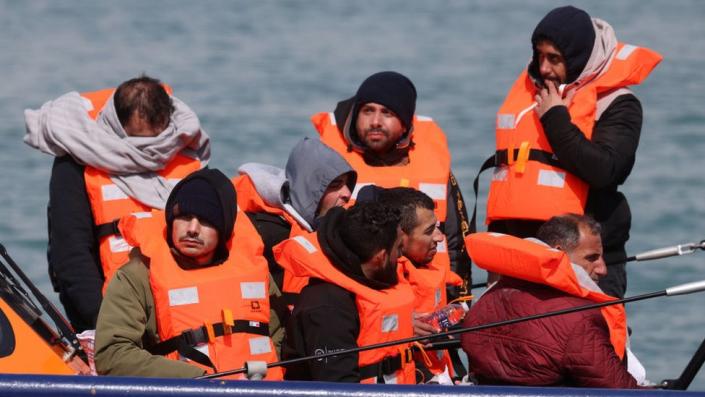
A record number of people have crossed the English Channel in small boats this year.
The government hopes its controversial plan to send some migrants to Rwanda will deter people from using this route to come to the UK.
How many migrants cross the Channel?
The total for this year to date stands at 39,430.
This is the highest number since these figures began to be collected in 2018.
In 2021, the total was 28,526 people, while in 2020 it was 8,404.


Who are the migrants and where are they from?
In the first six months of 2022, more than half were from three countries:
-
18% came from Albania
-
18% from Afghanistan
-
15% from Iran
The number of Albanians making the crossing has risen sharply since 2021.
Last year Iranians were the biggest group, accounting for 30% of all small boat arrivals. Another 21% were Iraqis, 11% Eritreans and 9% Syrians.
In 2021, 75% of all small boat arrivals were men aged 18 to 39 – with about 5% of arrivals men aged 40 or over. Seven per cent were women aged over 18, and 12% were children under 18 (of whom three-quarters were male).
What is the Rwanda plan?
The government wants to send some asylum seekers to Rwanda for their claims to be processed.
It argues this will deter people who arrive in the UK through what it calls “illegal, dangerous or unnecessary methods”.
However, the numbers crossing the Channel have continued to rise since the policy was announced.
The plan was widely condemned by charities and campaign groups, who have launched a series of legal challenges. The policy is currently on hold until a decision is reached in the courts.


However, Home Secretary Suella Braverman said the government still wants to go ahead. She said it was her “dream” to see the first flight leave for Rwanda, and that she was also seeking asylum partnerships with other countries.
Ms Braverman has also talked about the need for closer co-operation with France, as well as an increased police presence on the French coastline and the use of drones to monitor crossings.
What happens when people arrive in the UK?
Most of the people who come by boat claim asylum on arrival in the UK. An asylum seeker is a person who has applied for the right to seek shelter and protection in another country.
Asylum seekers have an initial interview and – if their case is accepted – they can apply to remain in the UK.
However, recent changes to immigration law mean an asylum claim can be rejected if the applicant has a connection to a safe third country. This would include passing through France on the way to the UK.
The Home Office says applicants should receive a decision within six months but statistics show that over 70% of applicants had not heard back within that time.
Speaking to MPs in October about channel crossings, Home Office official Abi Tierney said that 96% of claims from 2021 are still to be processed.
During the application process, many people are kept in hotels due to a shortage of available accommodation. Some asylum seekers are also held in immigration detention centres.
They usually cannot work while their case is being considered.
If their application for asylum is accepted, they are allowed to stay in the UK. If it is rejected, they face being returned to the country they came from, although they can appeal against the decision.
Of the 6,910 small boat arrivals who have received an initial decision since 2018, 49% were granted asylum or another type of leave. The rest were refused.




